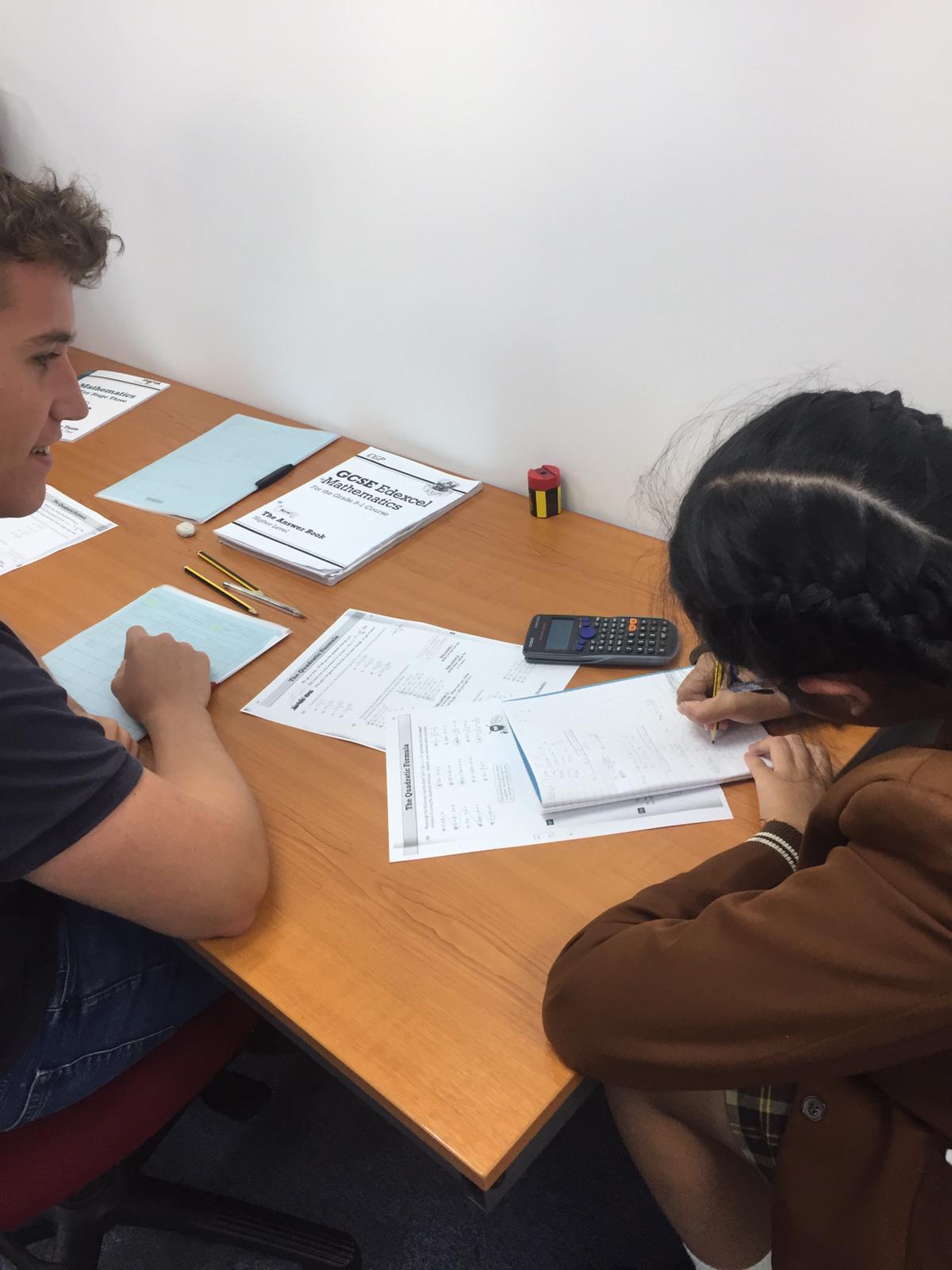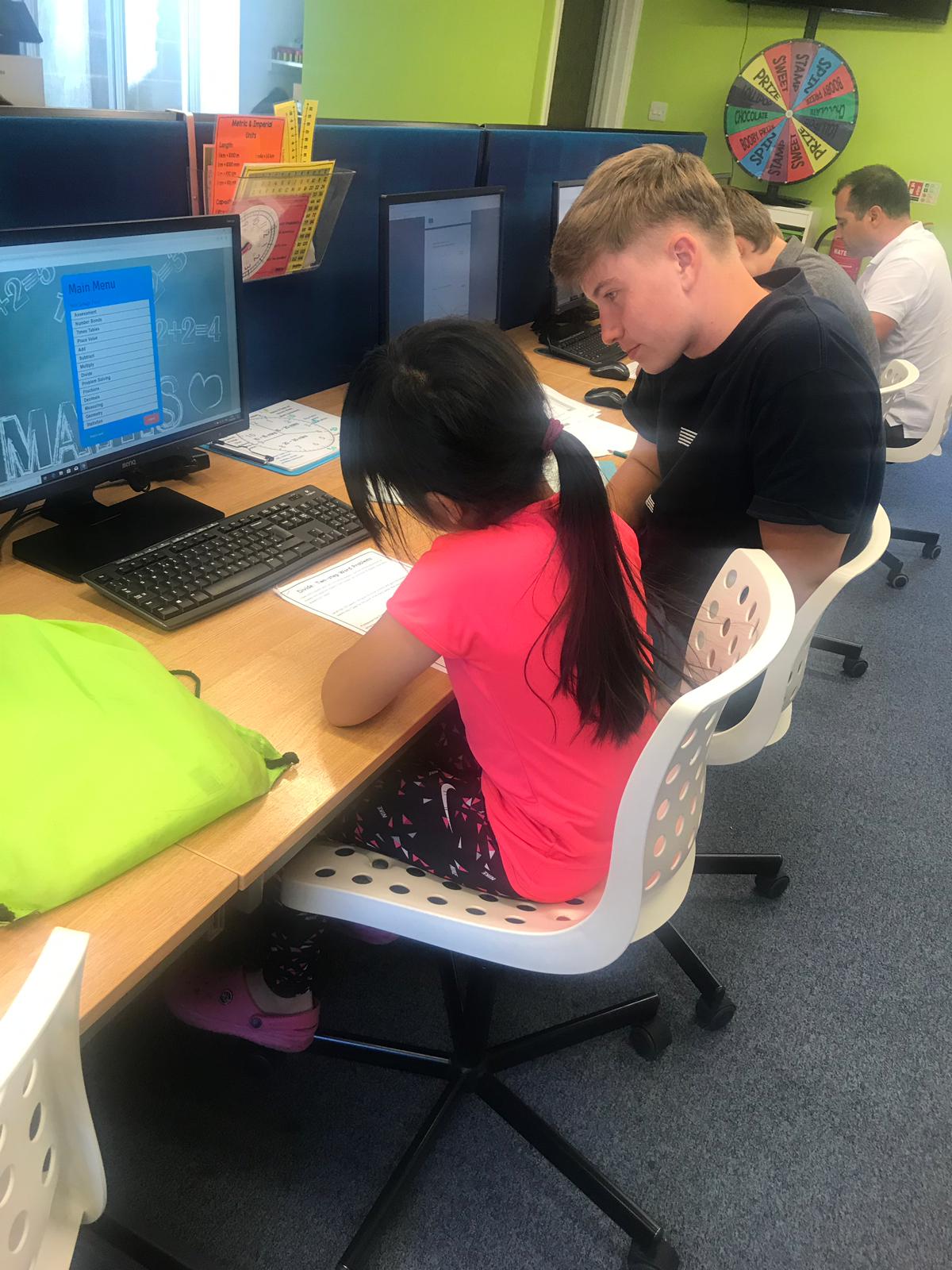3 ways to improve children’s memory from home

Improving your children’s memory from home can be simple and fun. There are many games and tricks to try out, like StudyBox’s 3 ways to improve children’s memory from home.
There are many games and activities to improve muscle memory, association and visualisation.
These will help children to actively engage whilst improving their memory.
Try these 3 ways to improve children’s memory from home:
Active reading
- Active reading is when children are involved with reading the text. This heightens the learning process whilst reading.
- There are many different strategies to try:
- Writing down new words or highlighting them.
- Reading aloud, to improve pronunciation.
- Critical thinking and questioning the narrative.
- Identifying literary devices, for example: alliteration, personification, hyperbole…
- Engaging with the text improves memory through active reading.
Word games
- Playing word games with children is free and easy.
- There are many word games for improving memory.
- The game ‘I went shopping and I bought…’ involves saying an item which can be found in the supermarket. Then the next player repeats the sentence and adds an item. As the game goes on, the players have to remember a long list of items, and repeat them, whilst adding on a new item each turn.
- This encourages all players to concentrate, as well as remember the long list of items.
Card games
- Playing card games, like ‘Memory’ can help to improve muscle memory.
- It involves turning placing the deck of cards spread out on a surface face down. Then take it in turns to turn over two cards at once. The participants must remember which cards have been turned over. Once two pairs of the same numbered care are turned over, the player can take the pair.
- This game improves concentration and focus. The players must memorise as many cards as possible in order to turn over pairs and complete the game.
Visualisation
- Visualising what is being taught can help children to remember more effectively.
- It allows what is being learnt to be associated with an image, which can be easily remembered.
- Children can associate images with what is being memorised.
- For example, children can create a mind map, which can be colour coded, or images can be drawn relating to the subject being memorised.
Teaching your child equivalent fractions

Fractions are important for children to learn, they are taught on school syllabus, as well as useful for day-to-day life. the first step is teaching your child equivalent fractions.
Equivalent fractions are fractions with different numerators (the number at the top) and denominators (the number at the bottom), but they represent the same values.

- For example, 1/2 , or one half, is the same as 2/4, or two quarters.
- This is because 2/4 will reduce to 1/2, which is its simplest form.
- They both represent the same value, they are just written differently.
So, equivalent fractions are fractions which look different from each other but they are the exact same value.
- 2/3 is the same as 4/6.
- This is because the numerator 2 goes into 4 twice.
- The denominator 3 also goes into 6 twice.
So:
2 x 2 = 4
3 x 2 = 6
This would become 4/6.
- It’s the same as 1.
- Take 1 to be 100, or one whole.
- Therefore, 1 is the same as 3/3, which is a complete fraction.
- This is because the numerator and denominator are the same.
Teaching your child equivalent fractions at home is simple once you break it down.
Knowing that the fractions are the same value, but written differently is the most important rule.
Once this has been taught, then you can provide examples and explain why they are the same values.
3 steps to helping your child set and reach goals

Setting goals will benefit your child in many ways. It will help them aim towards any achievements and make tasks seem less daunting.
But as a parent, how can you help your child to set and reach their goals?
Try these 3 steps to helping your child set and reach goals:
Identify the goal(s)
- Ask your child what goals they would like to set.
- Try writing down the goals somewhere your child can see them. This way they will be reminded of what needs to be achieved.
- Let them monitor their progress. Then the tasks will feel like a rewarding process when they are accomplished.
Make a schedule
- Create a realistic schedule for your child to follow.
- You can get creative with it. Try making a chart with the goals and adding stickers when they are achieved. You can even colour code each task to make it visually pleasing to look at.
- A visual chart will make the goals easy to monitor and keep on top of.
Create a reward system
- Your child may feel more motivated to complete their goals if there’s an incentive.
- It could be anything, from a gold star on the chart, a chocolate or even an activity.
- If the goal is challenging, an incentive can make a big difference. Even praising your child and letting them know they are doing a good job will go a long way.
Following these 3 steps to helping your child set and reach goals will provide a structure for completing tasks.
It will also make the end goal less daunting by breaking down the process.
3 ways for your child to practice mindfulness

Mindfulness and positivity goes a long way. Which is why it’s important as a parent to encourage children to practice mindfulness alongside education.
It is beneficial for a number of reasons, including keeping calm, remaining positive and organising thoughts. Implementing this technique with children will be beneficial for their education and learning.
Here are 3 ways for your child to practice mindfulness:
Positive mindset
- Help your child to have a can-do attitude in their daily life.
- Encouraging positive thinking and developing the right thoughts.
- Reducing stress by controlling thoughts and feelings.
- Talking to them about any issues that are bothering them.
Meditation
- Controlling your child’s way of thinking.
- Taking time out of your child’s busy routine to reflect upon their day.
- Engaging the self with deep breathing.
- Teaching them to analyse what went well and what could have gone better.
Extra-curricular
- Finding something that your child loves to do in their spare time.
- Having a break from education and school work.
- Reducing stress through hobbies, such as physical activity or arts and crafts.
- Not only improves upon skills, but takes away pressure from academia.
Mindfulness is a useful technique which has a number of benefits. It is a way of controlling and regulating thoughts, boosting positivity and self-reflection.
Encouraging children to practice mindfulness will benefit their education, so why not try implementing our 3 ways for your child to practice mindfulness.
It is a way of relieving stress and remaining positive during those stressful exams and assignments.
It is also important as a parent to practice mindfulness. If you demonstrate being mindful, your child will most likely learn from the parent’s behaviour.
3 effective ways to improve your child’s concentration

Understanding how children learn and memorise information can help us to improve their education.
The way that children’s brains are wired is completely different to adults, which is why children’s attention spans are typically shorter.
Have you ever wondered how you can improve your child’s attention span so that their focus can improve when learning?
Try our 3 effective ways to improve your child’s concentration:
Playing focus games
You can make learning fun by incorporating games into daily activities. Try playing card games like ‘Memory’ or puzzles like Sudoku or Crosswords, these will improve attention span as well as focus. If you take away electrical gadgets like smartphones and tablets it will be less distracting, allowing your child’s concentration to be solely on the activity.
Create a distraction-free zone
By creating a distraction-free environment, your child will have somewhere dedicated for studying and completing work. This is a space where they can focus on the task they are completing without being tempted by the TV, mobile phones or other distracting electronics. Create an environment that is comfortable and calming for your child so that it makes the tasks enjoyable. If they concentrate best by listening to calming music, then why not try putting on soft background music. Make sure everything that your child needs is accessible so they don’t have to get up and search for anything.
Set a routine
By creating a timetable for daily activities, your child will have a structure to follow and know what they need to complete. If there’s a set time for completing homework, having dinner and other activities like reading, it can help to program their mind so they are aware of what they need to get done. This will also help with time management and organisation!
You can help your child with their concentration skills a number of ways! Training children’s brains to focus is something that will benefit them throughout their life. Concentration can be improved through brain training games, creating a peaceful environment for completing tasks and setting a routine to follow.
Subtracting fractions in 3 simple steps

Fractions are a challenging subject to grasp in maths. Helping children with subtracting fractions doesn’t have to be a difficult task though…
Follow our top tips on subtracting fractions in 3 simple steps!
1. Basic rules:
- The top number is called the numerator.
- The bottom number is called the denominator. This can be remembered as ‘d’ stands for denominator and down, as it’s at the bottom.
- Whatever is done to the denominator, must be done to the numerator.
2. Subtracting fractions with the same denominators
- As the denominators are the same, all that needs to be done is subtracting the numerators.
Example:
2/3 – 1/3
2 – 1 = 1
= 1/3
3. Subtracting fractions with different denominators
- The first step is finding the common denominator of the fractions being subtracted.
- This means that the bottom numbers need to be the same,
- To do this, find a number that both bottom numbers go into – a multiple of that number.
- For example, if the denominators are 4 and 8, both of these are a multiple of 8.
- It’s important to remember that whatever is done to the denominator, must be done to the numerator.
Example:
7/8 – 1/4 (Make the denominators the same)
7/8 – 1/8 (Do the same to the numerators)
1 x 2 = 2
7/8 – 2/8
Now subtract the numerators.
7-2 = 5
= 5/8
Top tips:
- Try drawing out the equations so it can be visualised. You can draw it like a pie:
 so this represents 1/4
so this represents 1/4
 and this is 1/3
and this is 1/3
- Or try asking it as a word problem.
- For example, Jessica has 1/3 of a chocolate bar. She gives her brother 1/2 of this. How much of the chocolate bar does she have left?
Subtracting fractions in 3 simple steps has never been easier!
Firstly teach your child the basic rules, labelling the numerator and denominator.
When the denominators are the same, the numerator simply has to be subtracted to get the answer.
When the denominators are different, a multiple of both denominators needs to be found.
Once this is complete, the same must be done to the numerator. Finally, subtract the fractions!
For additional help with subtracting fractions, click here.
If you are interested with other maths activities, like teaching times tables, find out more here.
Learning Times Tables

Learning times tables can be a challenge for children, as there are multiple sequences to learn, from 1 up until 12.
Children start learning times tables in Key Stage 1. Times tables are really important to learn as they are the building blocks of maths; they make division, adding and fractions easier.
Knowing your times tables will come in handy for exams, like GCSEs, SATs and 11+, especially the non-calculator exams!
Here are some ways to make learning times tables that little bit easier:
Colour coding
- Colour code each times tables to make memorising them easier. Why not try matching up the times tables in the same colours that overlap, for example, in the 2 times tables 2 x 8 = 16, in the 8 times tables 8 x 2 = 16. These can both be in red. Learning just one variation, like 3 x 4 = 12, cuts the workload in half, when the equation is flipped it’s the same outcome: 4 x 3 = 12.
Make a times tables grid
- Create a 13 x 13 grid. Put a multiplication symbol in the left corner. Then write numbers 1 to 12 in the left top and bottom columns. You can practice times tables by filling in the squares.
- Alternatively, you can print out a completed grid and display it somewhere visible.

Start off small
- Start off learning the 2 times tables and work your way up.
- This will make it easier learning the bigger ones, once a general pattern is established.
- For example, 2 x 4 = 8, and 4 x 2 = 8. The 2 times tables can be doubled in the 4 times tables.
Make flash cards
- Make times tables flash cards, which can be taken with you everywhere! You can also colour code these.
- Constant repetition and being tested on them will make it easier for the information to be absorbed.
Find what works for you
- Find a learning style that works for you. Some people learn best through constant repetition to retain information, others prefer writing down or reciting information aloud.
Find different patterns
- Try and identify patterns in each time table, to make it easier to learn. The 9 times tables follow a pattern: 9, 18, 27, 36, 45… The units decrease each time as the times tables increase.
- For the 5 times tables, you can simply half 10 times tables, for example, 10 x 4 = 40, double 4 is 8, so 5 x 8 = 40.
- The 7 times tables are the hardest as 7 is a prime number, so the times tables don’t follow a pattern. Knowing that 7 x 7 = 49 makes it simpler, as you can work your way up or down the times tables from this.

Learning times tables is a skill for life. It increases ability and confidence with maths in future, as we use times tables throughout school and into adulthood, too!
Need additional help with times tables? Sign up for a free trial with StudyBox here! Or call the centre to chat to one of our friendly tutors: 0203 189 1442
How to give your child an extra boost with learning

A child’s most important role model and teacher is their parent. A parent takes on board many job roles, asides from providing for their child, they are also responsible for educating and eventually preparing their child for the real world. In order for parents to give their child an extra boost with learning, it is important that they are well acquainted with their child’s timetable, in order to support them academically throughout their time at school.
Follow these tips on how to keep up-to-date with your child’s learning:
-
Monitor progress
Stay in the loop with your child’s progress at school. This will allow you to support them in difficult subject areas and encourage them with subjects they are progressing in. Ask them what went well with their day and what they are finding more challenging. Follow up on this by giving them an extra boost when needed and rewarding progress.
-
Stay connected
Stay connected with your child’s school by getting to know their teachers and going to all parent-teacher conferences. Ask the school what you can do to help your child if they are struggling in any areas. Attending every parents evening will further keep you up to date, through discussing progress between the parents, teacher and child. Checking regular report cards will give an indication as to where your child is academically, based on mock exams and in-class tests.
-
Keep up to date
Knowing their timetable and upcoming tests and exam dates is necessary for monitoring progress. This will ensure your child stays on top of revision and fully prepares for important exams.
-
After school assistance
Helping your child prepare for exams is necessary for giving them that extra boost in school. Statistics show that you are 50 percent more likely to remember something you’re revising by saying it aloud. Perhaps try reciting the material together and testing your child on the syllabus through a question and answer format. Help with homework and ensure this is completed by the deadline. Also encourage extra-curricular activity, like leisurely reading, online educational activities and sports.
-
Arrange additional help if needed
Being a parent is a full-time job; sometimes it is difficult to find the time to support your child whilst balancing everything else. Attending after-school tuition will establish a routine in a learning environment and free more time in a busy parent’s schedule, in order to give your child an extra boost with learning. StudyBox Tuition provides one-to-one support in maths, English and science, tailoring lessons to the individual and building skills and confidence.
StudyBox has centres in Croydon, Sutton and Wallington, with two new centres opening soon in Epsom and Battersea. You can book a free trial here. Alternatively, call one of our centres to find out more, on: 02086428884.
How to get a head start in September

Are you wondering how to get a head start in September for your child?
Starting the new academic year can be stressful. Especially for students going into Year 10 and 11, about to start their GCSE preparation and exams. It can be daunting not knowing what to expect.
Beginning GCSE preparation as early as possible is essential for receiving good grades. Here are some useful tips for succeeding in exams.
Attend additional tuition
After-school tuition at StudyBox provides one-to-one support and customised lessons to each child. Therefore, our tutors are able to evaluate and focus on which areas that the student finds difficult. The sooner the student starts revision, the better they are able to grasp the topic. StudyBox offers GCSE, SATs and 11+ tuition.
Short, regular study intervals
A study by Dr. Dave Haylock shows that regular revision in short intervals is the most effective way to revise. ‘Revise little but often,’ Haylock suggests, which will also reduce stress. This effect is known as “spacing,” which allows the material to be remembered again once revisited.
Start revision early
Dr. Cecile Brich says it is vital to ‘start your revision early.’ Keep up with the workload and make notes as you go. Remember to write clear notes in class and build on these notes using revision guides. ‘This is not something you can do well by cramming the night before. Working regularly and keeping notes up to date makes revision much more effective and much less stressful,’ Dr. Brich advises.
Set a timetable
A revision timetable is an effective way to keep organised and on top of revision. Dedicate a few hours per day for each subject and stick to it.
Find a method that suits you
Everyone learns differently. If you are unsure how to revise, test these different methods until you find what works best for you:
- Mind map: Write the subject in the middle, then the topic coming off the first branch. Branching off from this, write keywords and bullet points to trigger the material.
- Colour coding: Write the topic as the heading and subtopics underneath. Bullet point the material in short sentences. Use different colour pens or highlighters and colour code each topic.
- Flashcards: Write each topic on a flash card. Bullet point the information underneath each topic. Read the cards throughout the day and take them with you wherever you go.
- Reciting: Ask a relative or friend to test you on the material, having you repeat the information back to them.
Break down each subject
The GCSE syllabus consists of multiple subjects, each containing in-depth material to revise. In order to make the workload bearable, it is recommended to break each subject down into topics. This way, the workload seems less daunting and each topic can be ticked off a list once completed. It is also easy to return later to the topics that are more challenging.
If you want to get a head start in September, sign up for StudyBox today! Book your free trial here. Alternatively, call one of our centres in Croydon, Sutton or Wallington on: 02086428884
International Youth Day 2019

International Youth Day 2019 brings to attention the 1.8 million young people in the world. This is the largest youth population there has ever been, making a sixth of the human population.
From this figure, 1 in 10 of the world’s children live in conflict zones. 24 million are out of school. As a result of this, there is an increasing isolation of youth in societies, due to conflict and political instability. It is easy to forget that education is a privilege which not everyone has access to.
The 2019 theme of International Youth Day is ‘Transforming Education.’ At StudyBox, we believe that education is imperative for paving a better future. This is why we support, motivate and challenge our students to help them get where they want to be.
This year’s Transforming Education theme highlights efforts to make education more inclusive for all, including efforts from youths themselves.
Education is necessary for diminishing poverty, achieving gender equality and improving job prospects. As a result, the government, youth and youth-led organisations are working together. They aim to transform education into a fundamental tool for all.
Currently, “only 10% of people have completed secondary school education in low income countries.” Moreover, “40% of the global population are not taught in a language they speak or fully understand.” (United Nations)
Quality education plays a crucial role in youth development, which is why constant learning from a young age is important for shaping and growing the individual. StudyBox offers maths, English and science tuition, as well as a coding course. Our courses include the 11+, GCSEs, SATs, mocks, which is all important for paving the path to the next step in life, be it secondary school or GCSEs.
